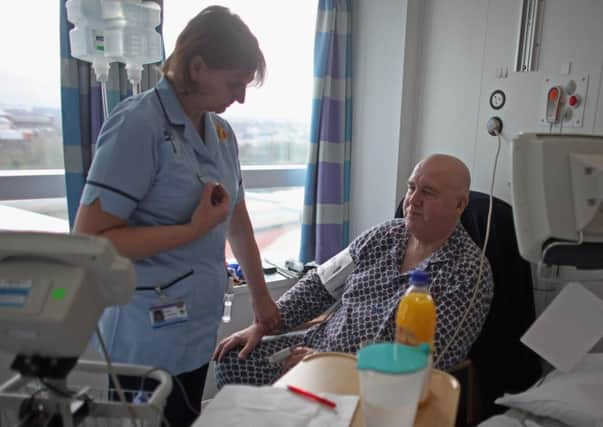We need to tackle gender inequality in medical treatment - Catherine Calderwood


What if medicine was sexist? I don’t mean the medical profession, I mean the practice of medicine.
Women remain disadvantaged in society today and women have poorer health than men in older age. Women’s health has not been prioritised yet women are generally our carers of the young and the old, the providers of a healthy (or otherwise) diet and important influencers of lifestyle habits. A healthy mum in pregnancy can lead to a good legacy for health for a lifetime.
Advertisement
Hide AdAdvertisement
Hide AdCardiovascular disease is one of the biggest killers in Scotland. We have made very good progress in reducing our death rate thanks to a rapid response for a coronary artery stent and having a standardised lifesaving drug regime in the event of a heart attack. We have improved rehabilitation and pride ourselves on providing treatment and after care which we know gives best outcomes.
But, when we look at the statistics, whilst the vast majority of men receive all of the care rapidly and are discharged home with optimal medication and follow up, this is not the case for women. Women receive access to emergency care less quickly and are significantly less likely to go home on all of the correct drugs and with plans for exercise programmes and rehabilitation.
The science that informs medicine – including the prevention, diagnosis, and treatment of disease -routinely fails to consider the impact of the critical differences between males and females.
Females have historically been excluded from animal and human studies.
Research in humans has been conducted in the main with male patients and results have been extrapolated to include women. Drugs work differently in women.
“Women only” conditions are frustratingly invisible. Endometriosis for example is a chronic condition predominantly affecting young women. It affects a similar number of women as diabetes and asthma yet on average takes eight years from first presentation of symptoms to diagnosis.
Until 2012 the stillbirth rate in Scotland (and the rest of the UK) was one of the worst in the developed world. It had not changed significantly for 30 years, it was an accepted norm. It is unthinkable that a tragedy affecting one in 150 pregnant women has received such little attention. A loss which devastates entire families and which can, in many cases, be preventable. In Scotland we decided not to accept this stillbirth rate as normal, we decided to prioritise and invest in maternity care and aimed to reduce the rate by 15 per cent. In fact we have actually achieved a reduction of 22 per cent in five years – 65 more healthy babies going home with their families each year than in the past.
It’s crucial that we recognise the importance of women in society and a key part of this is prioritising the health of women – it has positive impact for us all.
Advertisement
Hide AdAdvertisement
Hide AdI am a member of the National Advisory Council on Women and Girls.
We advise the First Minister on what is needed to tackle gender inequality in Scotland. We launched our first report last month with wide ranging recommendations working towards our goal of #GenerationEqual.
We are planning a “Spotlight” on women’s health in March.
Catherine Calderwood is Scotland’s Chief Medical Officer and is on Twitter @CathCalderwood1